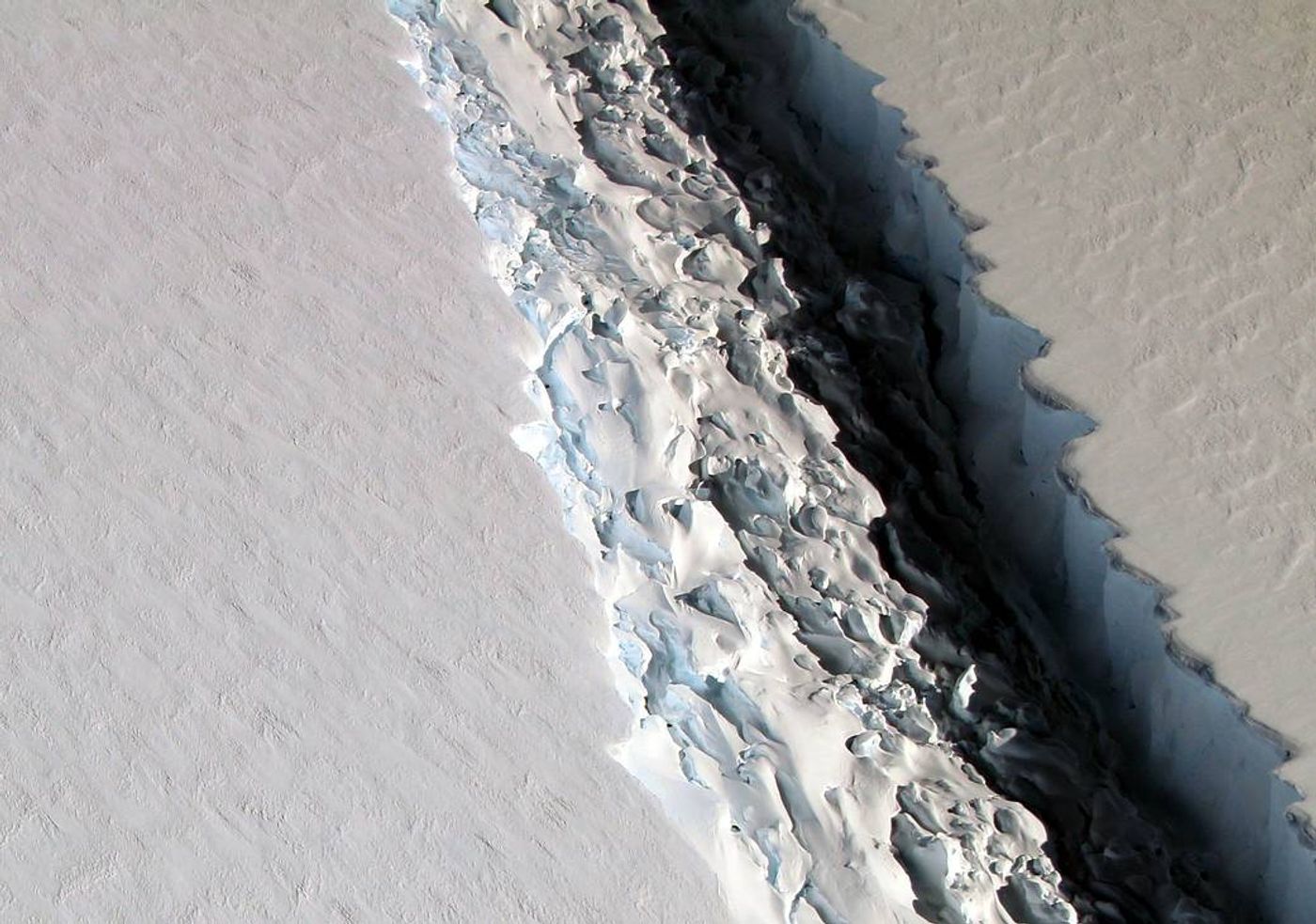NASA Found This Huge Fissure in the Antarctic Ice Shelf
There are a number of problems with the Arctic and Antarctic regions of the Earth that are occurring because of climate change, but the latest in worrisome Antarctic activity comes by way of the Larsen C Antarctic ice shelf.
NASA photographed the following massive rift in the ice shelf on November 10th of this year during an aerial survey conducted for the agency’s IceBridge mission:
Image Credit: NASA/John Sonntag
Ice shelves are really what they sound like – chunks of ice formed out of ice streams and glaciers that extend far beyond the land mass of Antarctica, but they serve a much greater purpose than just making the continent seem bigger, as they also add support to the parts of ice sitting right behind them.
These rifts are a big problem, because when an ice shelf splits like this, one section floats off and away from Antarctica, where it eventually meets warmer ocean waters and can melt down. When it melts, it will add to the ocean water level, which impacts the entire planet’s ocean tides.
According to the space agency, the ice shelf hasn’t separated just yet, but the rift is growing. It’s currently estimated to be about 70 miles long, 300 feet wide, and 0.3 miles deep. Given that the fissure has been able to grow this big so far, it can only be discerned that it will continue to grow and eventually cause some problems in the future.
When the ice shelf fully separates, it will create a massive iceberg that the agency says will be close to the relative size of the state of Delaware, and that will then move towards warmer waters where it can cause some trouble.
NASA is getting ready to launch its ICESat 2 mission in 2018, which will allow the agency to further validate what the original ICESat mission did when it retired seven years ago, but it will also allow NASA to collect more information about this growing rift and track it in real time.
It should be interesting to see what kind of results unfold as a result of this research.
Source: NASA









